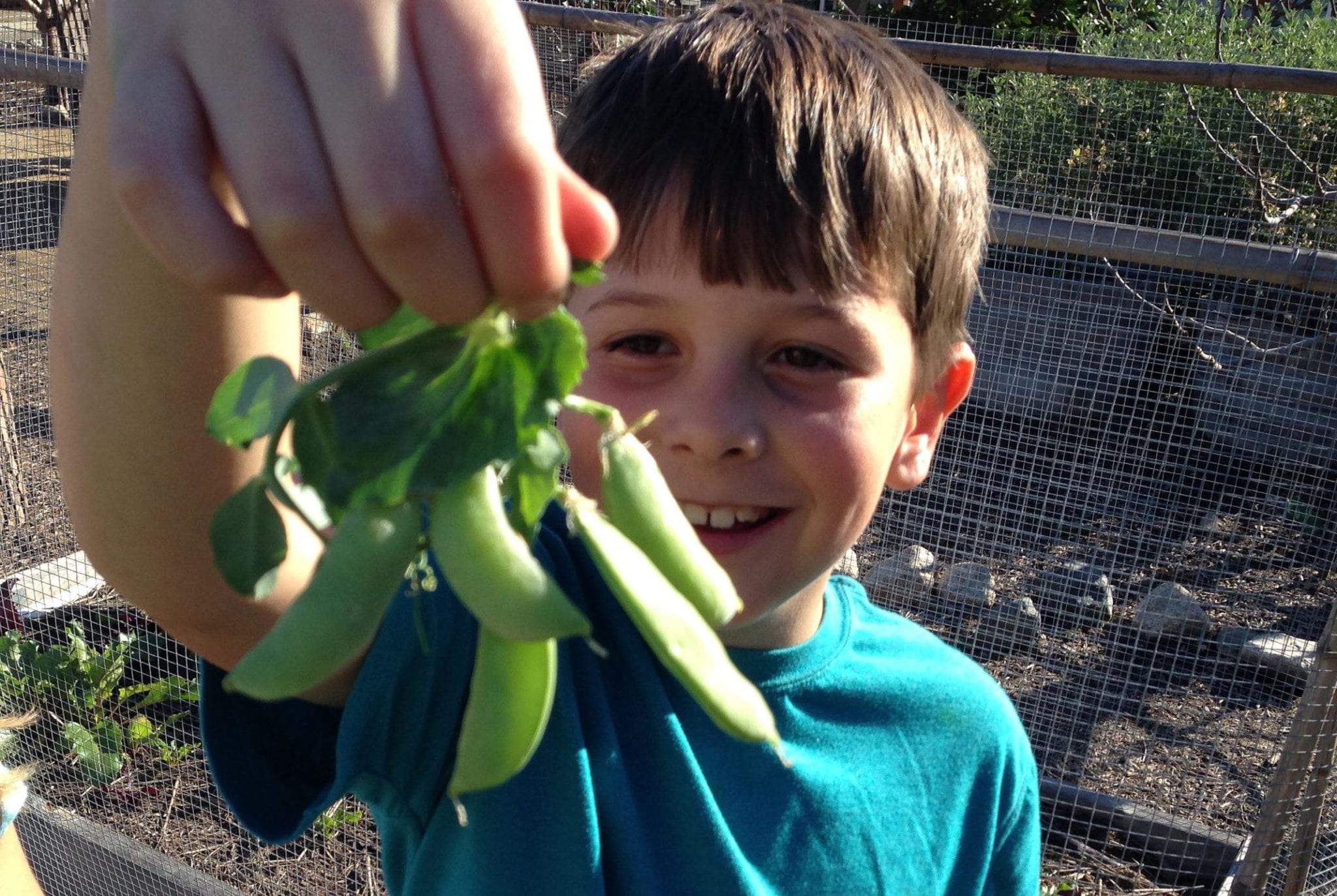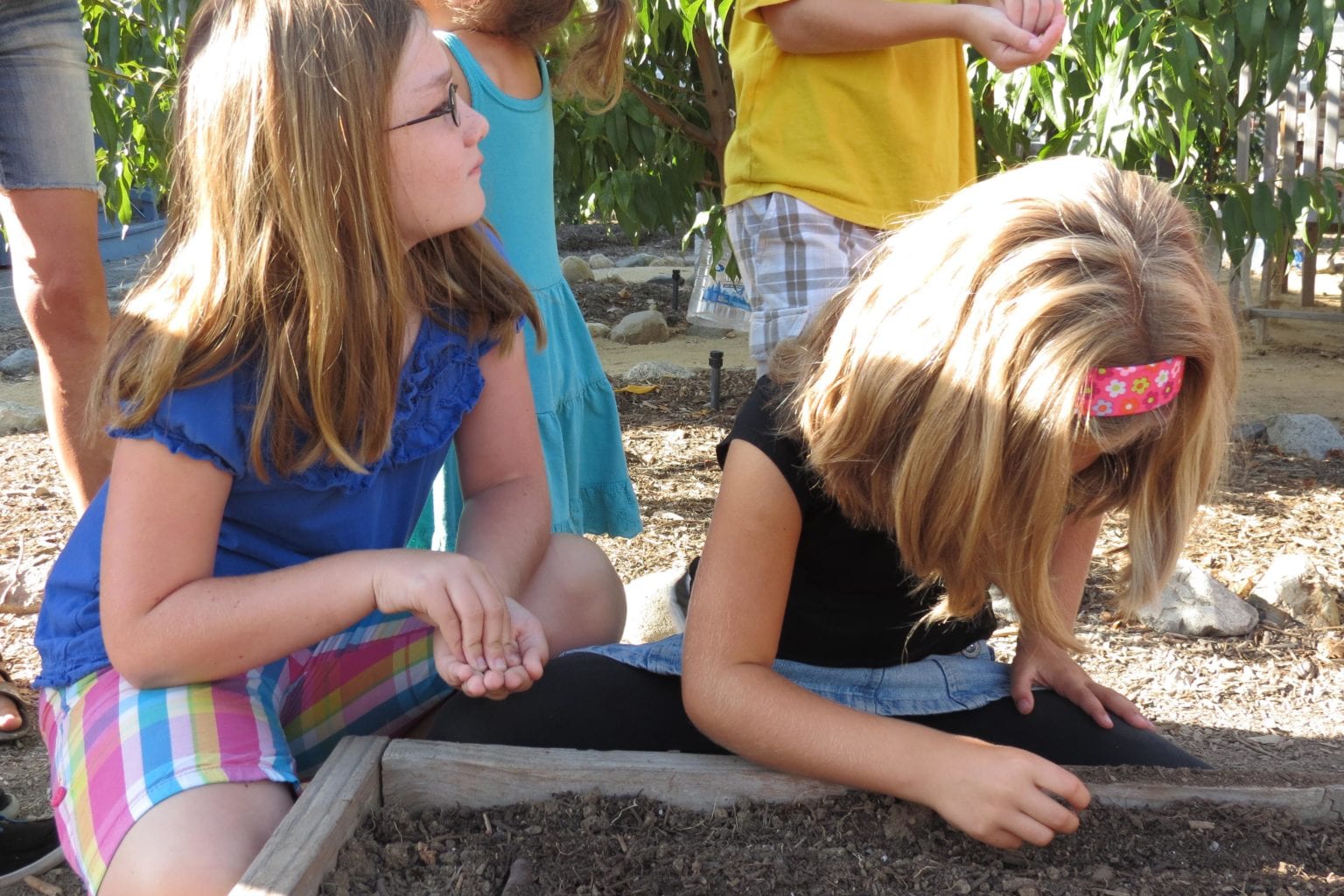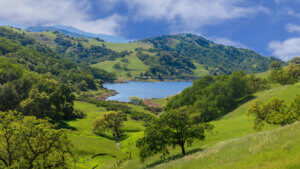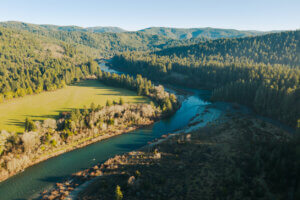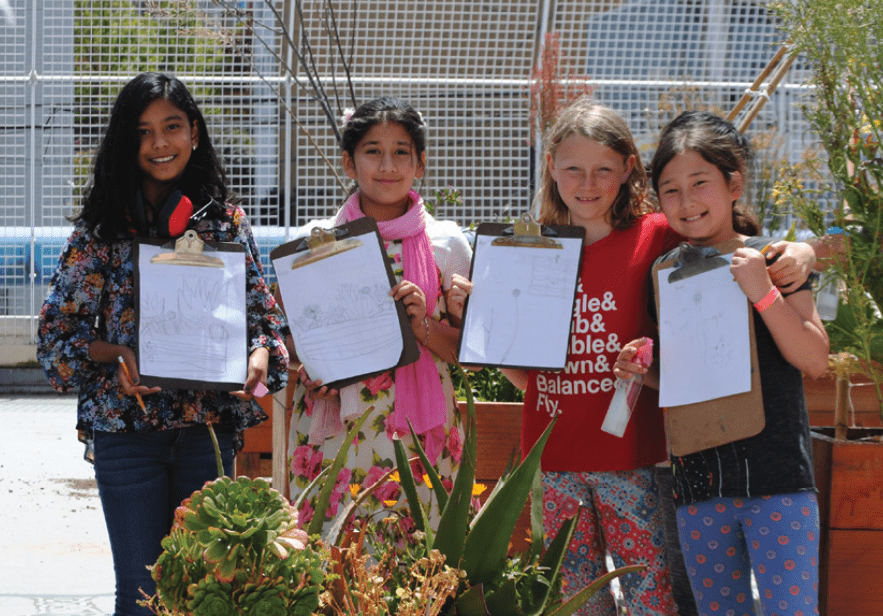In September 2007, I enrolled my son in kindergarten at our local elementary school. I have a clear memory of a parent-teacher association meeting where I spontaneously asked about the potential for installing a garden on school grounds. “We don’t have a hose bib,” they answered, “so it won’t work.” End of story.
By my son’s third grade year, I found a local Waldorf-inspired public charter school with lots of hose bibs and not one garden, but five. My children thrived under the mentorship of a dedicated volunteer master gardener, an entire campus full of teachers who knew the value of hands-on education, and a community-based education provider who worked with the school to develop a pilot program of integrated ecoliteracy intensives, which the students enjoyed once a week throughout the school year.
Ecoliteracy? I’d never heard of it before. But with a supportive administration, the gardens and outdoor experiences were integrated into every subject of every grade with the students exploring and problem-solving along the way.
The foundation of the curriculum was “study of the natural world” paired with “study of human beings’ relationship with the environment” and “healthy living habits.” But this was just the beginning of my parental story as an unlikely witness to what Dr. Gerald Lieberman refers to as a “gigantic, powerful shift in the TK–12 system in California.” I almost feel like a scribe who has been unknowingly immersed and woven into the shift and now has an unspoken duty to share with the masses. Most parents don’t even know a meaningful change to California’s education code has happened, or what it took to get here.
Little did I know at the time I discovered ecoliteracy that significant efforts on making environmental literacy available to all was already happening in our state. As outlined on the California Department of Education web page about the advancement of environmental literacy in the years between 2003 and 2011:
- state assembly bills put the Environmental Education Initiative (EEI) into action;
- Environmental Principles and Concepts (EP&Cs) were approved and required to be included in future textbooks;
- Governor Schwarzenegger signed the California Children’s Outdoor Bill Outdoor Rights; and
- State Superintendent of Public Instruction Tom Torlakson recommended the creation of an environmental literacy plan to help organize and coordinate the state’s environmental education efforts.
I didn’t know any of this was happening. All I knew was that our school gardens and my son were thriving. As a volunteer, I helped first grade students plant their first seeds and water them. I learned from local master gardeners as they taught upper grade students about winter pruning of stone fruit trees and how to graft avocado trees. Sixth graders squealed about grubs in the compost bins and asked questions about what to do with them until they figured out they could feed them to the chickens. During our summer garden care, we saw the life cycle of Monarch butterflies unfold from cocoons hanging on our garden railings. During the winter, donated rainwater barrels collected water from the classroom roofs to be reused to nourish the gardens.
I knew we were lucky to find a school where our administrator had a vision of “paying it forward” with stewardship and ecoliteracy. Since I was already in the midst of what turned out to be a five year stint volunteering as school garden coordinator, the administrator tapped my husband and I for our first official environmental literacy project. He appointed us to co-author the school’s application for recognition as a US Department of Education Green Ribbon School.
I had the pleasure of watching my sixth grader explain rainwater harvesting to US Secretary of Education Arne Duncan’s team when our school was awarded the honor of becoming an official 2013 US Department of Education Green Ribbon School. My son’s seventh grade year culminated in a permaculture field trip to Ojai. His eighth grade year consisted of a year-long research project, mentored by a National Oceanic and Atmospheric Administration research scientist based in Monterey, and an extended oral presentation, which he titled “Kelp Is Not Boring.”
It became even more apparent to me that our school administrator was a visionary when I listened to Dr. Lieberman’s keynote on trends in schooling at a Children and Nature Network Grassroots Gathering in September 2013. He addressed teachers and parents about how to overcome the hurdle of getting administrative buy-in to outdoor classrooms and integrating environmental literacy into the curriculum. I heard him loud and clear.
To gain administrative support you need to highlight the benefits over the burdens—and the benefits for students are far-reaching and directly applicable to things administrators care about.
It made me realize that even though our school was ahead of the times because of insightful leadership, others were still trying to plant the environmental literacy seed at their school. Every child in California should have an education that explores our role in the environment and the interactions between humans and the natural world, especially focusing on our local environment because of how relevant it can be for the students.
Soon after my realization, Superintendent Torlakson moved forward with his Environmental Literacy Task Force charged with creating California’s Blueprint for Environmental Literacy, which was officially released to the public in 2015:
An environmentally literate person has the capacity to act individually and with others to support ecologically sound, economically prosperous, and equitable communities for present and future generations. Through lived experiences and education programs that include classroom-based lessons, experiential education, and outdoor learning, students will become environmentally literate, developing the knowledge, skills, and understanding of environmental principles to analyze environmental issues and make informed decisions.
If you are a parent wondering why you should care, California’s EP&Cs sum it up nicely. The EP&Cs are a human imperative to understand the interaction of natural systems with human–social systems. You will find environmental literacy where humans and the environment interact (hint: everywhere).
During the 2017 school year, I contracted with the nonprofit side of our local environmental education provider Inside the Outdoors Foundation as their social media manager. I was thrilled to have the chance to share the story of environmental literacy pilot programs and EP&Cs trainings in Southern California. I had followed their work for many years, since they serve over 125,000 local school children annually. In fact, the board president convinced me to start a family nature club, which has had a long-lasting impact on the children and families who joined. I also admired their attention to equity—so imagine my surprise and satisfaction when I discovered they were doing this “legacy work” to positively influence generations of Californians to come.
Education code drives our TK–12 system. Because of Ten Strands and their work to pass SB 720 (Allen, 2018), environmental literacy is now part of California’s education code and is included in the frameworks for science, history–social science, and health.
The California Science Teachers Association (CSTA) released a position statement on environmental literacy for California students: “CSTA believes that achieving environmental literacy for all students in California is a high priority, deserving a central role in curriculum, instruction, and assessment.”
At almost every point in my son’s school career and my own professional life, I somehow managed to touch upon a tendril of the environmental literacy vine winding its way through the system, both in formal and nonformal contexts. My son is about to start his senior year. He’s moved from kindergarten to twelfth grade over the final decade of the tireless multi-decades long work, which brought environmental literacy into California’s education code. He is creating a coalition of STEM clubs on his high school campus to come together for a common purpose of transforming their campus into a green school. They’ve written proposals, put in some back-breaking work, and worked with stakeholders to advance their vision.
He finds that the students of his generation hold environmental stewardship as a constant value in their lives. They are motivated. They understand the ripple effect of the choices they make—whether it’s how to dispose of waste, how to best sustain a parcel of land, or how to be environmentally-conscious about using their power as consumers. They are responsible global citizens who will not let a lack of hose bibs influence the positive outcomes they seek.
